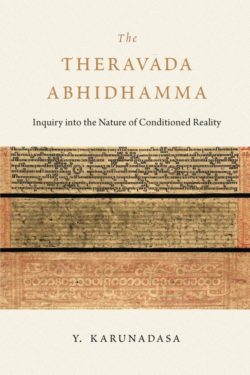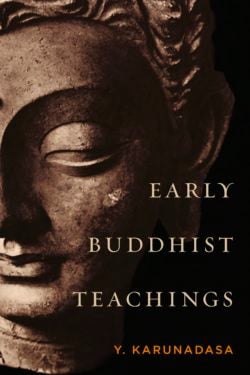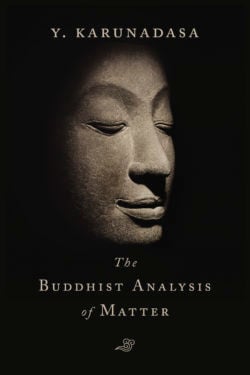Y. Karunadasa

Y. Karunadasa is Professor Emeritus at the University of Kelaniya and a former director of its Graduate Institute of Pali and Buddhist Studies. He has served as a visiting professor at the University of London, the University of Toronto, and the University of Hong Kong, and as the Numata Chair at the University of Calgary. He lives in Colombo, Sri Lanka.
Books, Courses & Podcasts
The Theravada Abhidhamma
The renowned Sri Lankan scholar Y. Karunadasa examines Abhidhamma perspectives on the nature of phenomenal existence. He begins with a discussion of dhamma theory, which describes the bare phenomena that form the world of experience. He then explains the Abhidhamma view that only dhammas are real, and that anything other than these basic phenomena are conceptual constructs. This, he argues, is Abhidhamma’s answer to common-sense realism—the mistaken view that the world as it appears to us is ultimately real.
Among the other topics discussed are
-
-
- the theory of double truth (ultimate and conceptual truth),
- the analysis of mind,
- the theory of cognition,
- the analysis of matter,
- the nature of time and space,
- the theory of momentary being, and
- conditional relations.
-
The volume concludes with an appendix that examines why the Theravada came to be known as Vibhajjavada, “the doctrine of analysis.”
Not limiting himself to abstract analysis, Karunadasa draws out the Abhidhamma’s underlying premises and purposes. The Abhidhamma provides a detailed description of reality in order to identify the sources of suffering and their antidotes—and in doing so, to free oneself.
Early Buddhist Teachings
Discover the birth of Buddhism and the essentials of Buddhist teachings with this comprehensive explanation of early Buddhism’s key doctrines. You’ll come away with:
-
insight into the beginning of Buddhism and the significance of its core beliefs—dependent arising, non-self, moral life, the diagnosis of the human condition, the critique of theoretical views, and the nature of Nibbāna;
-
a lucid understanding of the Buddha’s challenge to the concept of the subject as a self-entity and the reality of both the subject and object, perceiver and perceived, as a dynamic process;
-
a grasp of early Buddhist teachings as representing a middle position (equally aloof from spiritual eternalism and materialist annihilation) and a middle path (equally aloof from self-mortification and sensual indulgence); and
-
the experience of the Buddha’s teachings on attaining liberation as comprehensible, sensible, and something we can make part of our own practice.
The Buddhist Analysis of Matter
The Buddhist Analysis of Matter is an in-depth study of the Buddhist view of the nature and composition of matter as interpreted in Theravāda Buddhism. The study is mainly based on the seven treatises of the canonical Abhidhamma as well as the subsequent commentarial exegesis. However, in order to bring the subject into a wider perspective and to present it with a measure of precision, it takes into consideration the parallel doctrines of the Vaibhāṣika and Sautrāntika schools of Buddhism. These were two of the leading non-Mahāyāna schools with which the Theravādins had much in common. Both subscribed to a realistic view of existence: while the former had a tendency to extreme realism, the latter had a predilection, but not a commitment, to subjectivism.
Acclaimed scholar Y. Karunadasa’s Buddhist Analysis of Matter provides a much-needed micro view of the topic with a detailed examination of the Theravādins’ list of rūpa-dhammas—the ultimate irreducible factors into which material existence is analyzed. It exposes the nature of the basic material elements and explains their interconnection and interdependence on the basis of conditional relations. It concludes with an attempt to understand the nature and relevance of the Buddhist analysis of matter in the context of Buddhism as a religion.



